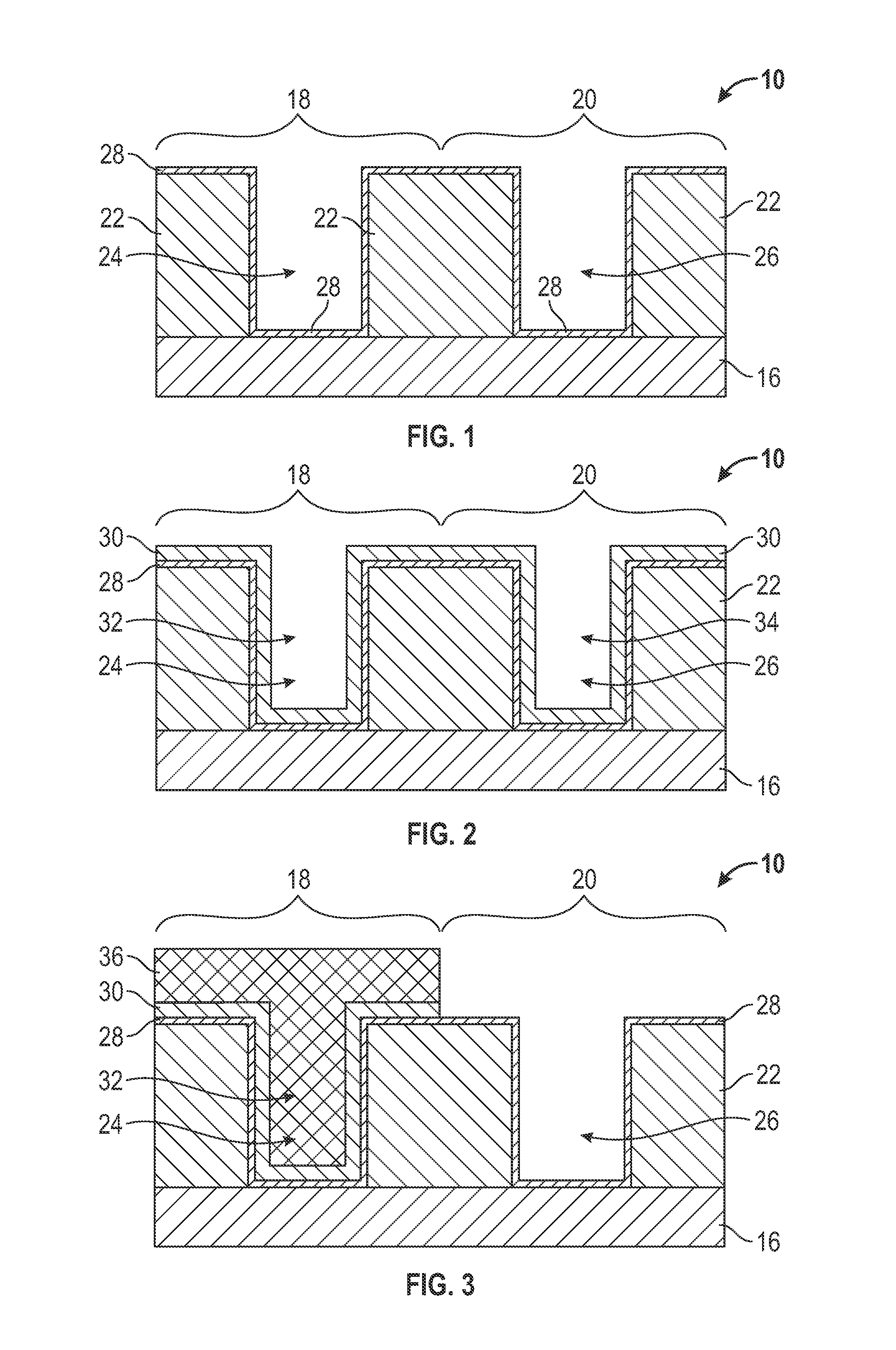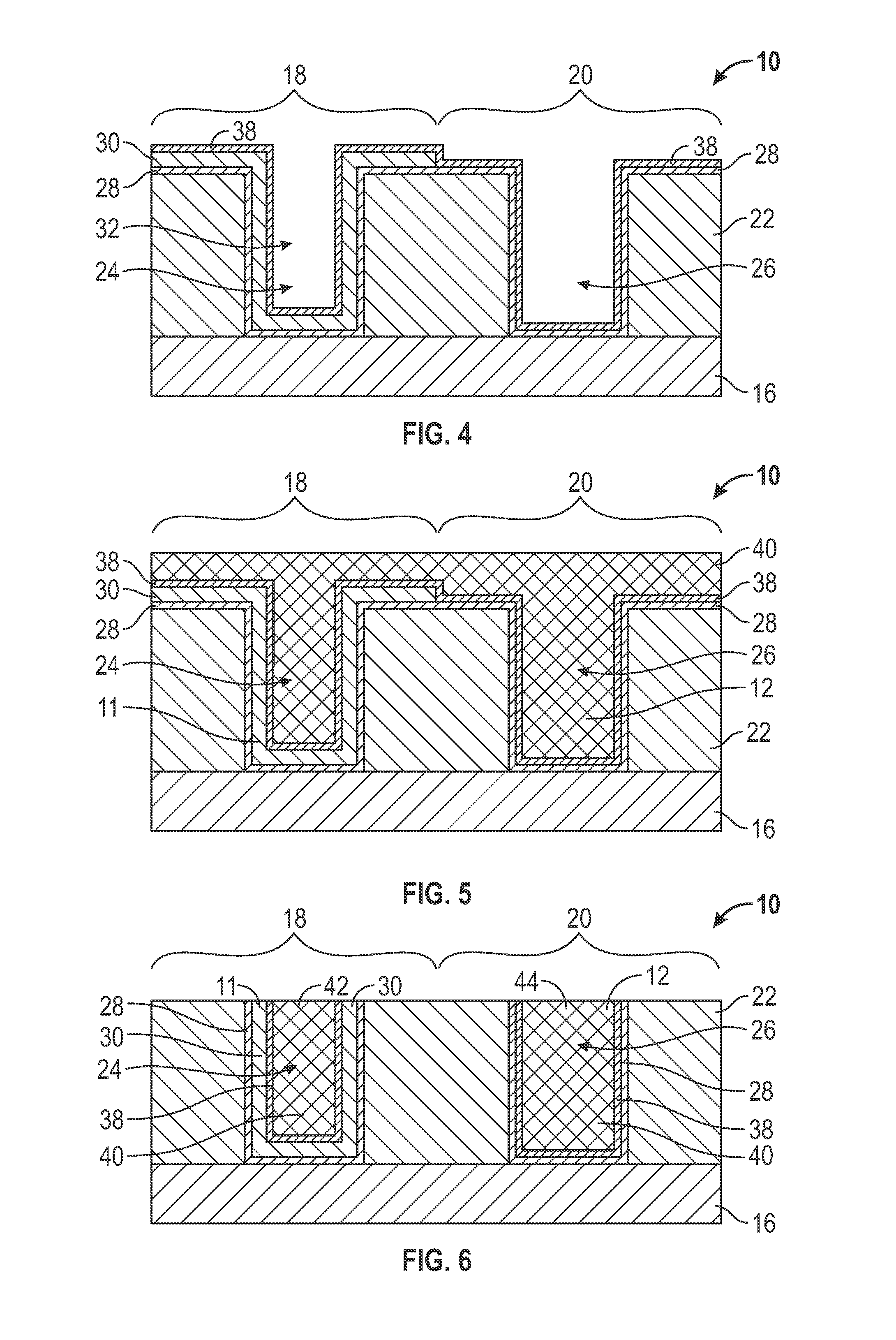Methods for fabricating integrated circuits having improved metal gate structures
a technology of metal gate structure and integrated circuit, which is applied in the direction of basic electric elements, electrical equipment, semiconductor devices, etc., can solve the problems of vt shift, leakage, and increase variability
- Summary
- Abstract
- Description
- Claims
- Application Information
AI Technical Summary
Benefits of technology
Problems solved by technology
Method used
Image
Examples
Embodiment Construction
[0010]The following Detailed Description is merely exemplary in nature and is not intended to limit the various embodiments or the application and uses thereof. Furthermore, there is no intention to be bound by any theory presented in the preceding background or the following detailed description.
[0011]Various embodiments contemplated herein relate to methods for fabricating integrated circuits having improved metal gate structures. In accordance with one embodiment, during intermediate stages of the fabrication of an integrated circuit (IC), a NFET trench and a PFET trench are formed in a NFET region and a PFET region, respectively, of an interlayer dielectric material on a semiconductor substrate. A layer of a N-type work function metal is deposited overlying the NFET and PFET regions to partially fill the NFET and PFET trenches and define an inner cavity in the NFET trench. The N-type work function metal is a conductive work function metal that is selected from the group of titan...
PUM
| Property | Measurement | Unit |
|---|---|---|
| dielectric constant | aaaaa | aaaaa |
| dielectric constant | aaaaa | aaaaa |
| work function | aaaaa | aaaaa |
Abstract
Description
Claims
Application Information
 Login to View More
Login to View More - R&D
- Intellectual Property
- Life Sciences
- Materials
- Tech Scout
- Unparalleled Data Quality
- Higher Quality Content
- 60% Fewer Hallucinations
Browse by: Latest US Patents, China's latest patents, Technical Efficacy Thesaurus, Application Domain, Technology Topic, Popular Technical Reports.
© 2025 PatSnap. All rights reserved.Legal|Privacy policy|Modern Slavery Act Transparency Statement|Sitemap|About US| Contact US: help@patsnap.com



